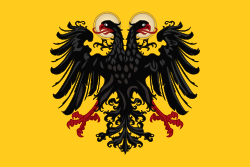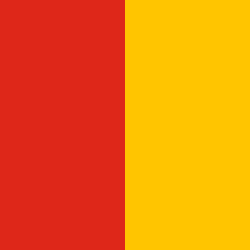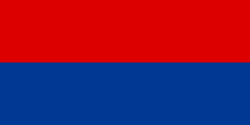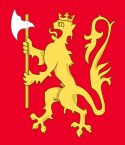1222
| 2. tisíciletí |
◄◄ ◄ 1218 • 1219 • 1220 • 1221 • 1222 • 1223 • 1224 • 1225 • 1226 ► ►►
Události
- 10. březen – Velké privilegium české církve
- 24. dubna – vydána tzv. Zlatá bula Ondřeje II.
Narození
Úmrtí
- 10. března – Jan I. Sverkersson, švédský král (* 1201)
- 23. června – Konstancie Aragonská, královna uherská, německá, sicilská a císařovna Svaté říše římské (* 1179)
- 2. srpna – Raimond VI. z Toulouse, syn toulouského hraběte Raimonda V. (* 27. října 1156)
- 12. srpna – Vladislav Jindřich, moravský markrabě z rodu Přemyslovců (* 1160)
- ? – Theodoros I. Laskaris, nikájský císař (* asi 1174)
Hlava státu
Evropa
Na území dnešní ČR a Střední Evropa
 Svatá říše římská – Fridrich II.
Svatá říše římská – Fridrich II. České království – Přemysl Otakar I.
České království – Přemysl Otakar I. Bavorské vévodství – Ludvík I. Bavorský
Bavorské vévodství – Ludvík I. Bavorský Saské vévodství – Albrecht I.
Saské vévodství – Albrecht I.- Trevírské arcibiskupství – Theodoric II.
- Württemberské hrabství – Hartman I. – Ludvík III.
- Mohučské arcibiskupství – Siegfried II. z Eppstein
- Míšeňské markrabství – Jindřich III. Vznešený
- Durynské lankrabství – Jindřich III. Vznešený
 Polské knížectví – Lešek I. Bílý
Polské knížectví – Lešek I. Bílý Uherské království – Ondřej II.
Uherské království – Ondřej II.
Itálie
Balkán
 Chorvatské království – Ondřej II.
Chorvatské království – Ondřej II. Srbské království – Štěpán I. Prvověnčaný
Srbské království – Štěpán I. Prvověnčaný Bosenský banát – Ondřej II.
Bosenský banát – Ondřej II. Latinské císařství – Robert I.
Latinské císařství – Robert I.- Epirský despotát – Theodoros Komnenos Dukas
Západní Evropa
 Francouzské království – Filip II. August
Francouzské království – Filip II. August Dánské království – Valdemar II. Vítězný
Dánské království – Valdemar II. Vítězný Anglické království – Jindřich III. Plantagenet
Anglické království – Jindřich III. Plantagenet Brabantské vévodství – Jindřich I. Brabantský
Brabantské vévodství – Jindřich I. Brabantský Lotrinské vévodství – Jindřich I. Brabantský
Lotrinské vévodství – Jindřich I. Brabantský
Severní Evropa
 Švédské království – Jan I. Sverkersson, po jeho smrti Erik XI. Švédský
Švédské království – Jan I. Sverkersson, po jeho smrti Erik XI. Švédský Norské království – Haakon IV. Norský
Norské království – Haakon IV. Norský- Kyjevská Rus – Jurij II. Vsevolodovič
Blízký Východ a Severní Afrika
- Nikájské císařství – Theodoros I. Laskaris – Jan III. Dukas Vatatzés
- Rúmský sultanát – Kajkubat I.
Dálný Východ a Asie
- Kumáni – Kuthen
- Chórezmská říše – Džaladdin Mingburnu
 Mongolská říše – Čingischán
Mongolská říše – Čingischán Dillíský sultanát – Šamsuddín Iltutmiš
Dillíský sultanát – Šamsuddín Iltutmiš Japonské císařství – Go-Horikawa
Japonské císařství – Go-Horikawa Čínské císařství – Ning-cung (Sung)
Čínské císařství – Ning-cung (Sung) Korjo – Gojong Korejský
Korjo – Gojong Korejský
Externí odkazy
 Obrázky, zvuky či videa k tématu 1222 na Wikimedia Commons
Obrázky, zvuky či videa k tématu 1222 na Wikimedia Commons
Média použitá na této stránce
Autor: David Liuzzo, eagle by N3MO, Licence: CC BY-SA 3.0
Banner of the Holy Roman Empire, double headed eagle with halos (1400-1806)
Flag of Bavaria (striped)
Flag of Hungary from 6 November 1915 to 29 November 1918 and from August 1919 until mid/late 1946.
Autor: Sodacan, Licence: CC BY-SA 3.0
Královská standarda francouzského krále (používaný jako státní vlajka Francouzským královstvím v období absolutní monarchie). Používaná byla v letech 1638 až 1790.
Autor: Samhanin, Licence: CC BY-SA 3.0
Banner of the Duchy of Brabant (1459)
Autor: Santasa99, Licence: CC BY-SA 4.0
Bosnian Royal Flag of Tvrtko I of Bosnia
Flag of the Papal States before 1808.
Royal Flag of the Goryeo dynasty. Flag's name is "Phoenix flag" ( hanja: 鳳旗, 봉기, Bong-gi). This flag is in the War Memorial of Korea.
Flag of the Kingdom of Saxony; Ratio (2:3)
Autor: Nikola Smolenski
The oldest known description of a flag of Serbia is from the 1281 description of a flag in the treasury of King Stefan Vladislav (1233-1243), which was kept in the Dubrovnik Republic. The description lists "vexillum unum de zendato rubeo et blavo" - a flag of fabric red and blue (zendato - čenda a type of light, silky fabric).[1] We however don't know how were the colours patterned; horizontal diband shown to the left is sometimes used in commemorations of medieval events in Serbia.[2] As Vladislav ruled from 1233 to 1243 and died after 1264, the flag predates the time of the description, hence making it likely to have been used around the middle XIII century. [1]
Autor: Samhanin, Licence: CC BY 3.0
Flag of Croatia (Early 16th century–1526) per source, which is historically innacurate as such a flag or coat of arms was used only since 1527 when the Croatian nobility elected the Habsburg dynasty.
Swallow-tailed flag used between the reign of Gustav I of Sweden until c. 1650, when it was succeeded by a triple-tailed flag.
Flag of the Sultanate of Delhi according to the Catalan Atlas (1375). The flag is grey with a black band in the Catalan Atlas (attached image), not green with a black band as previously uploaded.
The actual grey and black color appears clearly in the primary source (and the Catalan Atlas has plenty of green otherwise, so the grey cannot be a result of color fading), and this interpretation is confirmed by academic sources:
REFERENCE: "....that helps to identify yet another curious flag found in northern India – a brown or originally sliver flag with a vertical black line – as the flag of the Delhi Sultanate (602-962/1206-1555)." in (2010). "On the Timurid flag". Beiträge zur islamischen Kunst und Archäologie 2: 148.
WARNING: This is primary source image, the actual flag is otherwise unknown. The main source pointing to this design is the Catalan Atlas, which as a historical primary source. This image should not be added to articles without clearly attributing its primary source origin, and secondary sources are additionally desired if available (such as the one above). Note that FOTW (where most of those flags on Commons are adapted from) is based on user contributions like Wikipedia, and hence not authoritative.
OVERWRITING OF FICTIONAL FLAG:
Autor: David Ll L, Licence: CC BY-SA 4.0
Bandera del Imperio Latino de Constantinopla
Autor: Dragovit, Licence: CC BY-SA 4.0
This banner is shown in Znamierowski's World Encyclopedia of Flags.
Autor: Samhanin, Roede (tif file author), Licence: CC BY-SA 4.0
Royal Banner of Norway (14th Century) based on contemporary depictions of flags from Scandinavia and Scotland.






















